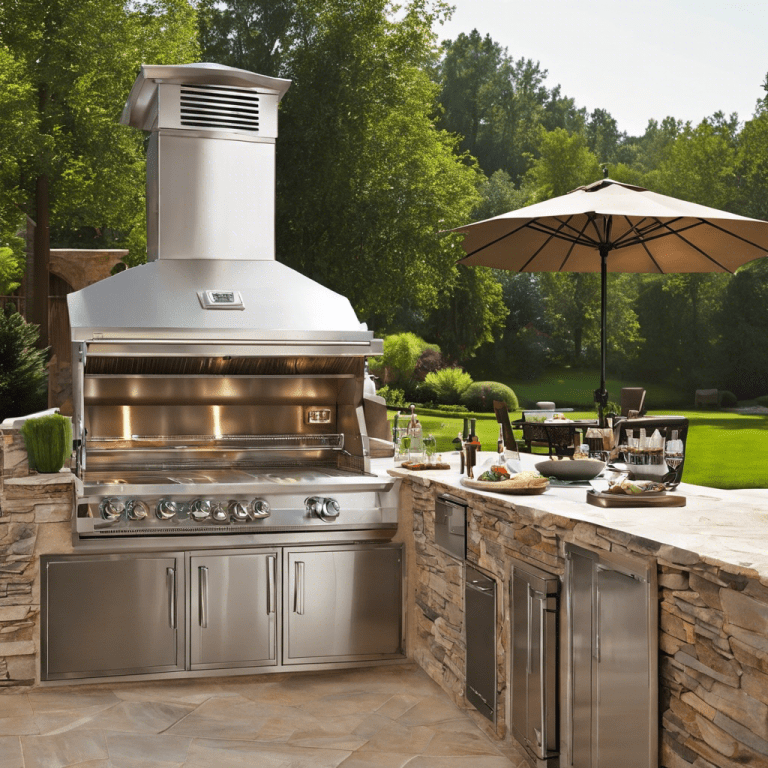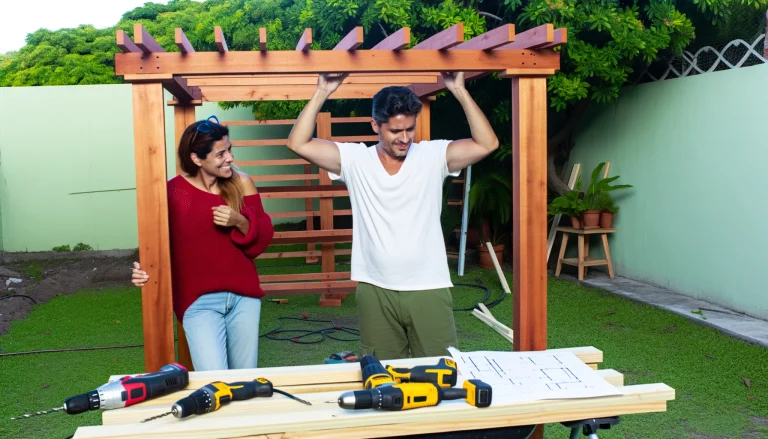DIY Roof Repair for Mobile Homes: Step-by-Step Instructions
This post may contain affiliate links which means I may receive a commission for purchases made through links. Learn more on my Private Policy page. “As an Amazon Associate I earn from qualifying purchases.”
Introduction
When it comes to diy mobile home roof repair, understanding the basics can save you a lot of money and prevent serious damage to your home. Mobile homes, particularly older models, have unique roofing systems that can be more prone to damage from water, fallen debris, and the elements compared to traditional “stick-built” homes. This guide will help you navigate the different types of mobile home roofs and the steps needed for effective repair.
Here’s a quick overview to get you started:
- Identify Roof Type: Determine if you have a flat, bowed, or pitched roof.
- Inspect & Clean: Locate the problem areas, clean them thoroughly, and prepare for repair.
- Seal & Coat: Apply neoprene or polyurethane sealant to problem areas and finish with a reflective coating.
With these basics in mind, let’s dive deeper into the step-by-step guide for repairing your mobile home roof effectively and efficiently.
Assessing the Damage
Before diving into any DIY mobile home roof repair, it’s crucial to assess the damage properly. This ensures you address all issues and don’t miss any hidden problems that could cause bigger headaches down the line.
Identifying Problem Areas
First, locate the roof leak. Start by examining the ceiling inside your mobile home for water stains or mold. These are clear indicators of a leak. Once you’ve spotted the signs indoors, move outside and inspect the roof.
Focus on:
- Roof Vents: These are common problem areas. Check for cracks or seals that have deteriorated.
- Seams and Joints: Look closely where different sections of the roof meet.
- Protrusions: Anything that sticks out of the roof, like pipes or antennas, could be a potential leak point.
Pro Tip: Use a garden hose to simulate rain. Spray water on specific sections of the roof while someone else checks inside for leaks. This can help pinpoint the exact location of the problem.
Preparing the Roof for Repair
Once you’ve identified the problem areas, it’s time to prepare the roof for repair. Proper preparation is key to a successful fix.
- Clean the Damaged Area: Remove any debris, leaves, or dirt. This ensures the sealants and coatings will adhere properly.
- Remove Old Sealant: Use ToughBuilt tools like a utility knife or scraper to take off any old, cracked sealant. This prevents new sealants from peeling off.
- Sand or Wire Brush: Sand down rough areas or use a wire brush to smooth the surface. This helps the new sealant bond better.
- Apply Reinforcing Tape: For larger cracks or seams, use roof glued tape or reinforcing tape. This adds an extra layer of protection before sealing.
- Seal the Leaks: Apply neoprene or polyurethane flashing sealant to the prepared areas. These sealants are durable and flexible, making them ideal for mobile home roofs.
Tools You’ll Need:
- Makita Tools: A cordless drill and screwdriver set can make your job easier and faster.
- ToughBuilt Tools: Utility knives, scrapers, and multi-tools are essential for cleaning and prepping the roof.
Preparation Steps:
- Clean Surface: Clear away dirt and old sealant.
- Apply Tape: Use reinforcing tape on larger cracks.
- Seal: Apply neoprene or polyurethane flashing sealant.
By following these steps, you’ll ensure that your roof is ready for a long-lasting repair. This preparation lays the foundation for a successful DIY mobile home roof repair.
Next, we’ll dive into specific repair techniques that can help you tackle different types of roofing issues.
DIY Mobile Home Roof Repair Techniques
When it comes to DIY mobile home roof repair, there are several methods and materials to choose from. Your choice will depend on the type of damage, the existing roof material, and your budget. Let’s explore some popular techniques and materials.
Roof Over Solutions
A “roof over” is a common solution for mobile home roofs, especially older models with flat or bowed roofs. This method involves installing a new roof over the existing one, which can add an extra layer of protection and insulation.
Types of Roof Over Solutions:
- Seamless Rubber Roof (EPDM): This is a popular choice for its durability and ease of installation. EPDM rubber is a synthetic rubber membrane that can be rolled out over the existing roof. It’s known for its flexibility and resistance to weather elements. Bill Burnside from RoofWrap notes that EPDM is “easy to install for homeowners with maybe some friends or family lending a hand.”
- Membrane Roof (TPO, PVC): Thermoplastic Polyolefin (TPO) and Polyvinyl Chloride (PVC) are other membrane options. These materials are also rolled out and provide excellent waterproofing. TPO is known for its energy efficiency, while PVC offers strong chemical resistance.
- Corrugated Metal Roof: Metal roofing is another durable option. It involves installing metal sheets over the existing roof. This type of roof can last up to 50 years but requires precise installation to prevent leaks. Metal roofs can be a bit challenging for DIY due to their weight and the need for specialized tools like those from Makita.
Applying Sealants and Coatings
Sealants and coatings are essential for waterproofing and extending the life of your roof. They can be used as part of a roof over or for patching smaller areas.
Types of Sealants and Coatings:
- Silicone Sealant: Silicone sealants are flexible and waterproof, making them ideal for sealing leaks around vents, seams, and other roof penetrations. They can be applied using a caulking gun and are known for their long-lasting properties.
- Aluminum Coating: Aluminum coatings reflect sunlight, reducing heat buildup on the roof. This can help lower cooling costs and extend the life of the roof. Aluminum coatings are applied with a roller or brush and provide a reflective surface that can also waterproof the roof.
- Elastomeric Coating: Elastomeric coatings are highly flexible and can stretch to accommodate roof movement. They are excellent for sealing and waterproofing, providing a durable, reflective surface. These coatings are typically applied in multiple layers for maximum protection.

Steps for Applying Sealants and Coatings:
- Clean the Surface: Ensure the roof is clean and free of debris. Use a wire brush or ToughBuilt scraper for thorough cleaning.
- Apply Primer: If required, apply a primer to ensure better adhesion of the sealant or coating.
- Apply Sealant/Coating: Use a brush, roller, or sprayer to apply the sealant or coating evenly. Follow the manufacturer’s instructions for drying times and the number of coats needed.
By understanding these DIY mobile home roof repair techniques, you can choose the best method and materials for your specific needs. Whether you’re doing a roof over or applying a new sealant, these solutions can help you protect your home effectively.
Next, we’ll discuss the importance of regular roof maintenance to prevent future issues.
Conclusion
Repairing your mobile home roof yourself can save you money and extend the life of your roof. But it’s not just about fixing leaks and damage; it’s also about the benefits you get from doing it right.
Energy Savings
One of the biggest perks of a well-maintained roof is energy efficiency. A new roof with a white surface can reduce energy costs by reflecting sunlight, keeping your home cooler. This is especially important in hot climates. As Burnside mentioned, while it’s hard to quantify exact savings due to various factors, any improvement to your roof can make a noticeable difference in your utility bills.
Roof Maintenance
Regular maintenance is key to preventing future problems. Inspect your roof at least twice a year and after any major storms. Look for cracks, holes, and other signs of wear. Clean the gutters, remove debris, and trim any overhanging branches. Use Makita tools for efficient and reliable maintenance work.
If you spot issues early, you can address them before they become major problems. This proactive approach can save you both time and money in the long run.
GenX Unfiltered
At GenX Unfiltered, we believe in the power of DIY projects to improve your home and save money. Our DIY Projects Tips page offers a wealth of information to help you tackle various home improvement tasks.
By following our DIY mobile home roof repair tips, you can ensure your mobile home stays in great shape. The right tools and techniques make all the difference. Whether you’re using ToughBuilt tools or applying a new sealant, proper maintenance will keep your roof—and your home—protected for years to come.
For more practical advice and step-by-step guides, stay tuned to our blog and join our community of DIY enthusiasts. Together, we can make home improvement simpler and more accessible for everyone.

Take action today and keep your mobile home roof in top condition!






